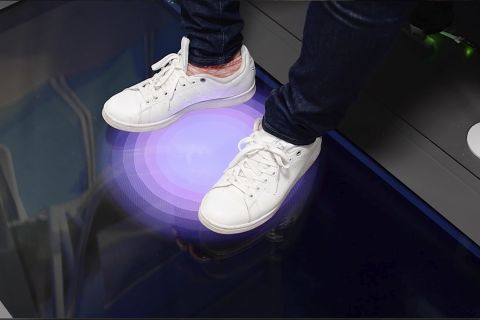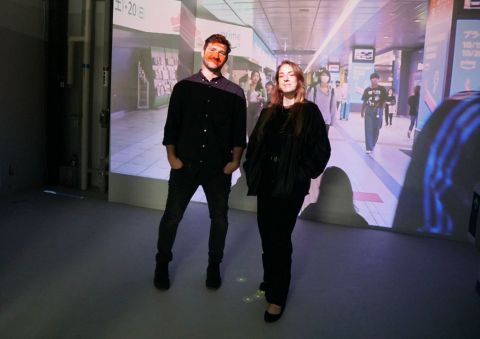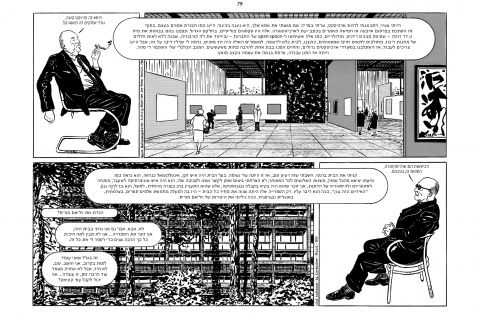Bezalel News
חדשות בצלאל
أخبار بتسلئيل
Bezalel Magazine | How Will We Navigate In the Future?
As the trend towards autonomous transportation gains momentum, so too does the need and demand for a user experience that will provide commuters with an advanced, customized solution that will assist not only in navigating the city but also in communicating with objects without any human presence. This was the starting point for the “Transportation of the Future” research group in the Master's degree program in Industrial Design, led by Dr. Romi Mikulinsky, Guy Blander, Naomi Slaney, Yuri Klebanov and Tom Reznikov. Using a speculative design methodology, the group forged pioneering initiatives aimed at implementing innovative technologies in public transportation in accordance with commuter needs. These initiatives are designed to build trust among commuters and improve their travel experience. The group has been working for several years in collaboration with the DLX Design Lab of the Institute of Industrial Science at the University of Tokyo and with commercial companies and public transportation operators from Israel and Austria.
The first project developed as part of the partnership with the Japanese laboratory was Project RIPPLE—a series of interactive interfaces aimed at facilitating entry of autonomous vehicles into cities. The group imagined situations in which the vehicle itself could compensate for the absence of a human driver (replaced by artificial intelligence, robotaxis or driverless cars) and take an active part in communicating with passengers. To this end, new forms of communication were developed that are efficient, human-centered, and universal, for example, a prototype of an interactive floor installed in a smart minibus (robotaxi), currently in use at the University of Tokyo.
Read more about Project RIPPLE
Another project developed in the last two years is Project Hitonami, which means human wave in Japanese. This project stemmed from the understanding that the cities around us are growing, and public transportation spaces, such as train stations, are becoming increasingly congested. The team concluded that navigating complex environments and managing sensory overload will be keys to navigating the cities of the future. The project team—Tom Reznikov, Tal Nisim, Yaara Schatner, Adi Simon, Niv Yashar, Guy Blander, Dr. Romi Mikulinsky, Naomi Slaney and Yuri Klabanov—reimagined urban life in which 6G and mixed reality (MR) devices are part of everyday life. In doing so, they tried to think about how to transform the complex transportation network into an efficient and user-centered system that harnesses emerging technologies.
During the last summer break, Anna Borkan and Dima Zaretsky, students in the Master’s Program in Industrial Design, traveled to the DLX Design Lab in Tokyo for an internship. Anna and Dima joined the research group and developed a prototype called Fireflies Navigation—a dynamic system resembling digital “fireflies.” The idea was to explore how metaphors from nature, such as fireflies, can enhance the navigation experience in crowded urban environments. The project aims to combine intuitive design with advanced technologies such as mixed reality (MR, XR) or augmented reality (AR) that allow the display of layers of information and different experiences on top of reality using wearable MR devices. The goal of the system is to help commuters and pedestrians navigate crowded transportation hubs, improve their navigation ability and regulate feelings of cognitive overload, stress and anxiety.
As a proof of concept, the team developed a prototype that was presented at the Open Day at the University of Tokyo. Visitors to the exhibition navigated a simulated train station, completing a task that required taking a ticket, walking to two gates and inserting the ticket into the correct gate. Their only guidance came from the movement of interactive fireflies projected onto the floor using a LIDAR sensor and projector. The prototype demonstrated how nature-based digital elements can foster intuitive interactions.
The development of these projects seeks to push the boundaries of what is possible in the field of future mobility now and in the future, changing the way people experience public transportation and making it an inclusive tool that promotes equality and responds to dynamic realities and changing needs. The group’s various projects have won research grants from the Japanese Ministry of Communications and the Ministry of Justice’s Class Action Fund and have been presented around the world.
For more information about 'Move'
Written by: Transportation of the Future Research Team—Guy Blander, Dr. Romi Mikulinsky, Naomi Slaney and Tom Reznikov. The Master’s Program in Industrial Design










